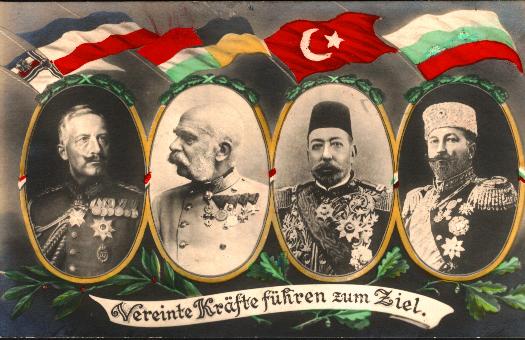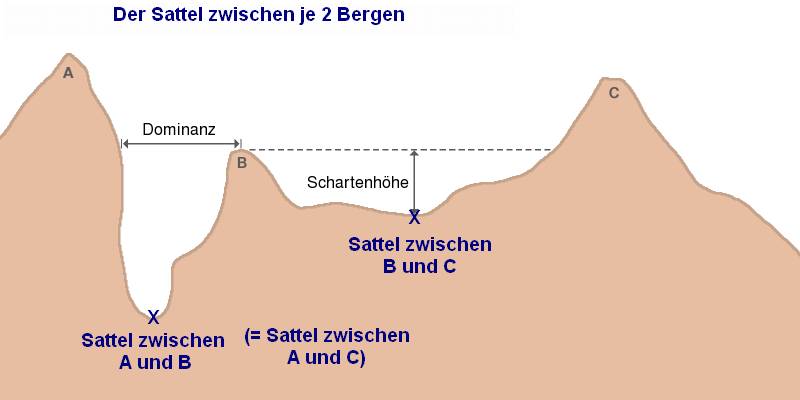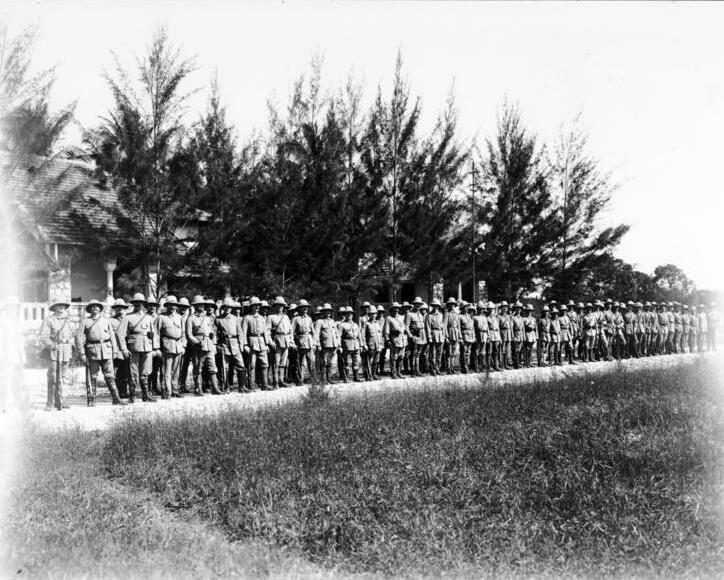|
Petrozsény Offensive
The Petrozsény Offensive was the opening action of the south-western front of the 1916 Battle of Transylvania, during World War I. The Transylvanian coal-mining center of Petrozsény ( Petroșani) was occupied by the Romanian Army on 29 August, two days after the Kingdom of Romania declared war on Austria-Hungary. Background Romania declared war on Austria-Hungary on 27 August 1916. The central column of General Ioan Culcer's Romanian 1st Army advanced into a region of valuable coal mines, whose output was crucial to the Hungarian railway system. The Romanian advance was opposed by the Austro-Hungarian 1st Army, under General Arthur Arz von Straußenburg. Romanian offensive The Romanian forces occupied Petrozsény on 29 August. The Jiu Covering Force, consisting of the 21st Infantry Brigade of the 11th Division, crossed the border at the Vulkán and Szurdok passes and occupied the vital Transylvanian coal-mining center at Petrozsény on 29 August. The weak resistance put ... [...More Info...] [...Related Items...] OR: [Wikipedia] [Google] [Baidu] |
Battle Of Transylvania
The Battle of Transylvania was the first major operation of the Romanian forces Campaign during World War I, beginning on 27 August 1916. It started as an attempt by the Romanian Army to seize Transylvania, and potentially knock Austria-Hungary out of the war. Although initially successful, the offensive was brought to a halt after Bulgaria's attack on Dobruja. Coupled with a successful German and Austro-Hungarian counterattack which started in mid-September, the Romanian Army was eventually forced to retreat back to the Carpathians by mid-October. The Romanian armies however managed to escape the Central Powers' attempts to completely destroy them. The Battle of Transylvania also caused the replacement of the Chief of Staff of the German Army and the shifting of German attention to the region, causing German offensive operations at Verdun to cease. Background Although bound by the pre-war Triple Alliance to the Central Powers, Romania instead joined the Triple Entente in Augus ... [...More Info...] [...Related Items...] OR: [Wikipedia] [Google] [Baidu] |
Vulcan Pass
Vulcan Pass ( ro, Pasul Vulcan, hu, Vulkán-szoros) is a mountain pass in the Hunedoara county of Romania, on the Jiu valley. The nearby city of Vulcan Vulcan may refer to: Mythology * Vulcan (mythology), the god of fire, volcanoes, metalworking, and the forge in Roman mythology Arts, entertainment and media Film and television * Vulcan (''Star Trek''), name of a fictional race and their home p ... is named after the pass. Mountain passes of Romania Mountain passes of the Carpathians {{hunedoara-geo-stub ... [...More Info...] [...Related Items...] OR: [Wikipedia] [Google] [Baidu] |
History Of Transylvania (1867–1918)
Transylvania is a historical region in central and northwestern Romania. It was under the rule of the Agathyrsi, part of the Dacian Kingdom (168 BC–106 AD), Roman Dacia (106–271), the Goths, the Hunnic Empire (4th–5th centuries), the Kingdom of the Gepids (5th–6th centuries), the Avar Khaganate (6th–9th centuries), the Slavs, and the 9th century First Bulgarian Empire. During the late 9th century, Transylvania was reached and conquered by the Hungarian conquerors, and Gyula's family from seven chieftains of the Hungarians ruled Transylvania in the 10th century. King Stephen I of Hungary asserted his claim to rule all lands dominated by Hungarian lords, and he personally led his army against his maternal uncle Gyula III. Transylvania became part of the Kingdom of Hungary in 1002, and it belonged to the Lands of the Hungarian Crown until 1920. After the Battle of Mohács in 1526 it belonged to the Eastern Hungarian Kingdom, from which the Principality of Transylvania ... [...More Info...] [...Related Items...] OR: [Wikipedia] [Google] [Baidu] |
Battles Of World War I Involving Austria-Hungary
A battle is an occurrence of combat in warfare between opposing military units of any number or size. A war usually consists of multiple battles. In general, a battle is a military engagement that is well defined in duration, area, and force commitment. An engagement with only limited commitment between the forces and without decisive results is sometimes called a skirmish. The word "battle" can also be used infrequently to refer to an entire operational campaign, although this usage greatly diverges from its conventional or customary meaning. Generally, the word "battle" is used for such campaigns if referring to a protracted combat encounter in which either one or both of the combatants had the same methods, resources, and strategic objectives throughout the encounter. Some prominent examples of this would be the Battle of the Atlantic, Battle of Britain, and Battle of Stalingrad, all in World War II. Wars and military campaigns are guided by military strategy, whereas bat ... [...More Info...] [...Related Items...] OR: [Wikipedia] [Google] [Baidu] |
Battles Of World War I Involving Romania
A battle is an occurrence of combat in warfare between opposing military units of any number or size. A war usually consists of multiple battles. In general, a battle is a military engagement that is well defined in duration, area, and force commitment. An engagement with only limited commitment between the forces and without decisive results is sometimes called a skirmish. The word "battle" can also be used infrequently to refer to an entire operational campaign, although this usage greatly diverges from its conventional or customary meaning. Generally, the word "battle" is used for such campaigns if referring to a protracted combat encounter in which either one or both of the combatants had the same methods, resources, and strategic objectives throughout the encounter. Some prominent examples of this would be the Battle of the Atlantic, Battle of Britain, and Battle of Stalingrad, all in World War II. Wars and military campaigns are guided by military strategy, wherea ... [...More Info...] [...Related Items...] OR: [Wikipedia] [Google] [Baidu] |
Battles Of The Eastern Front (World War I)
A battle is an occurrence of combat in warfare between opposing military units of any number or size. A war usually consists of multiple battles. In general, a battle is a military engagement that is well defined in duration, area, and force commitment. An engagement with only limited commitment between the forces and without decisive results is sometimes called a skirmish. The word "battle" can also be used infrequently to refer to an entire operational campaign, although this usage greatly diverges from its conventional or customary meaning. Generally, the word "battle" is used for such campaigns if referring to a protracted combat encounter in which either one or both of the combatants had the same methods, resources, and strategic objectives throughout the encounter. Some prominent examples of this would be the Battle of the Atlantic, Battle of Britain, and Battle of Stalingrad, all in World War II. Wars and military campaigns are guided by military strategy, whereas bat ... [...More Info...] [...Related Items...] OR: [Wikipedia] [Google] [Baidu] |
Battle Of Mezőlivádia
The Battle of Mezőlivádia was a military engagement fought between Romanian and Central Powers (German and Austro-Hungarian) forces during the Romanian Campaign of the First World War. It was part of the Battle of Transylvania. This battle is notable for being the first Central Powers counterattack against the Romanian invasion of Transylvania, as well as the first military engagement during the Battle of Transylvania to involve German forces. The battle resulted in a Romanian victory. Background Romania declared war on Austria-Hungary in the late evening of 27 August 1916. On 29 August, the Jiu Covering Force of the I Corps of the Romanian 1st Army (General Ioan Culcer) occupied the crucial Transylvanian coal-mining center at Petrozsény (Petroșani). The Romanians easily swept aside the weak resistance offered by the Hungarian coal-miner battalions, inflicting heavy casualties. The Romanians subsequently pushed west towards Hátszeg (Hațeg), stopping 15 miles from that city. ... [...More Info...] [...Related Items...] OR: [Wikipedia] [Google] [Baidu] |
Central Powers
The Central Powers, also known as the Central Empires,german: Mittelmächte; hu, Központi hatalmak; tr, İttifak Devletleri / ; bg, Централни сили, translit=Tsentralni sili was one of the two main coalitions that fought in World War I (1914–1918). It consisted of the German Empire, Austria-Hungary, the Ottoman Empire, and the Kingdom of Bulgaria and was also known as the Quadruple Alliance.german: Vierbund, tr, Dörtlü İttifak, hu, Központi hatalmak, bg, Четворен съюз, translit=Chetvoren sūyuz Colonies of these countries also fought on the Central Powers' side such as German New Guinea and German East Africa, until almost all of their colonies were occupied by the Allies. The Central Powers faced and were defeated by the Allied Powers that had formed around the Triple Entente. The Central Powers' origin was the alliance of Germany and Austria-Hungary in 1879. Despite having nominally joined the Triple Alliance before, Italy d ... [...More Info...] [...Related Items...] OR: [Wikipedia] [Google] [Baidu] |
Vulcan, Hunedoara
Vulcan (; formerly ''Jiu-Vaidei-Vulcan''; hu, Vulkán, ''Zsilyvajdejvulkán'' (''Zsily-Vajdej-Vulkán''); german: Wolkendorf, Wulkan) is a city in Hunedoara County, Transylvania, Romania. With a population of 24,160, it is the second-largest city in the Jiu Valley. It administers two villages, Dealul Babii ("Old Woman's Hill" in Romanian; ''Hegyvulkán'') and Jiu-Paroșeni (''Zsilymacesdparoseny''). The city is named after the Vulcan Pass that connects the Jiu Valley to Oltenia, itself being derived from Slavic "vlk", meaning "wolf" (even if "vulcan" means "volcano" in Romanian). The coal resources of the region were discovered in 1788 while the Austrian General Landau defended Vulcan from the Ottoman Turks. One night the soldiers could not put out the camp fire they made, as the piles of coal underneath had caught fire. General Landau thought that he could stop the Turks without a fight by setting piles of coal on fire. The Turks noted the large numbers of fires on the heights ... [...More Info...] [...Related Items...] OR: [Wikipedia] [Google] [Baidu] |
Bănița
Bănița ( hu, Banica, german: Bansdorf) is a commune in Hunedoara County, Transylvania, Romania. It is composed of three villages: Bănița, Crivadia (''Krivádia'') and Merișor (''Merisor''). Notes * Zoltán Kemény See also *Dacian fortress of Bănița Dacian fortress of Bănița is one of the six Dacian Fortresses of the Orăștie Mountains, in Romania. Together with the other Dacian fortresses in the area, it was designated as an UNESCO World Heritage Site in 1999. Gallery File:Orastie Eth ... References External links Jiu Valley Portal- the regional portal host of the official Jiu Valley websites Communes in Hunedoara County Localities in Transylvania Mining communities in Romania {{Hunedoara-geo-stub ... [...More Info...] [...Related Items...] OR: [Wikipedia] [Google] [Baidu] |
Saddle (landform)
The saddle between two hills or mountains is the region surrounding the saddle point, the lowest point on the line tracing the drainage divide (the col) connecting the peaks. When, and if, the saddle is navigable, even if only on foot, the saddle of a (optimal) pass between the two massifs, is the area generally found around the lowest route on which one could pass between the two summits, which includes that point which is a mathematically when graphed a relative high along one axis, and a relative low in the perpendicular axis, simultaneously; that point being by definition the col of the saddle. Topography A saddle is the lowest area between two highlands (prominences or peaks) which has two wings which span the divide (the line between the two prominences) by crossing the divide at an angle, and, so is concurrently the local highpoint of the land surface which falls off in the lower direction. That is, the drainage divide is a ridge along the high point of the saddle, as ... [...More Info...] [...Related Items...] OR: [Wikipedia] [Google] [Baidu] |
Landsturm
In German-speaking countries, the term ''Landsturm'' was historically used to refer to militia or military units composed of troops of inferior quality. It is particularly associated with Prussia, Germany, Austria-Hungary, Sweden and the Netherlands. Austria-Hungary The Austro-Hungarian ''Landsturm'' was a reserve force that consisted of men aged 34 to 55. It was intended to provide replacements for the front line units and provide a militia for local defense. It was divided into the Austrian Imperial (Kaiserlich) ''Landsturm'' and the Hungarian Royal ( Königlich) ''Népfelkelés''. During the First World War, the Austrian Landsturm formed 40 regiments totaling 136 battalions in Austria and the Hungarian Landsturm formed 32 regiments totaling 97 battalions. They provided 20 Brigades who took to the field with the rest of the army. Germany Prussia from 1813 In Prussia after the of 21 April 1813 all the male population from ages 15 to 60 who were capable of military ... [...More Info...] [...Related Items...] OR: [Wikipedia] [Google] [Baidu] |







